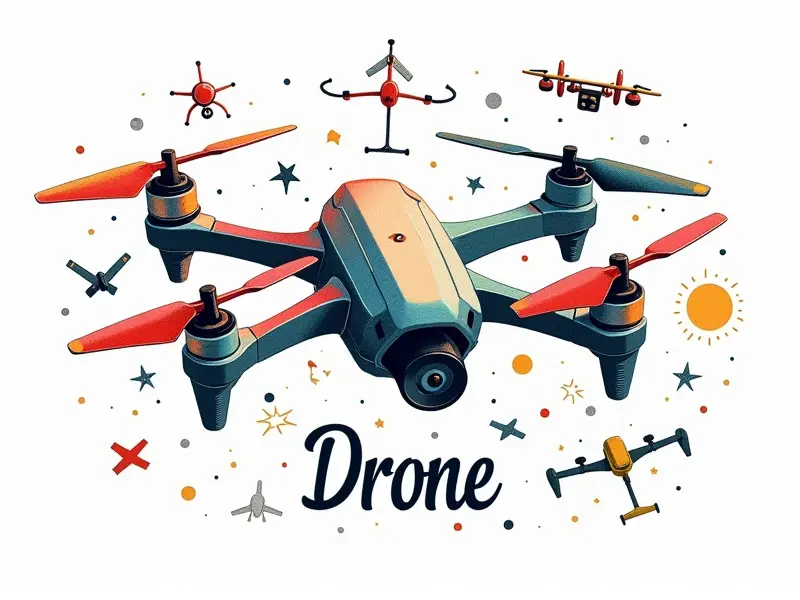Drift fix drone?

Drift Fix Drone: Comprehensive Guide to Minimizing Drift Issues
Drone drift can be frustrating, especially when you're trying to capture high-quality aerial footage or conduct precise flight operations. Understanding the causes of drone drift and implementing effective solutions is crucial for maintaining optimal performance. This article delves into various aspects of fixing and preventing drone drift, providing a comprehensive guide tailored to both beginners and experienced pilots.
How to Fix Drift in Your Drone Quickly
When your drone starts drifting unexpectedly during flight, it can be disorienting and potentially dangerous. Here are some immediate steps you can take:
- Check for Interference: Ensure there is no interference from other electronic devices or tall buildings that might affect GPS signals.
- Reset the Drone's Position: Land your drone and reset its home point to recalibrate the GPS system.
- Update Firmware: Make sure your drone’s firmware is up-to-date, as updates often include bug fixes for drift issues.
Common Causes of Drone Drift Explained
To effectively address drone drift, it's important to understand the underlying causes. Here are some common reasons why drones may experience drift:
- GPS Signal Weakness: Poor GPS signal reception can lead to inaccurate positioning and increased drift.
- Magnetic Interference: Magnetic fields from power lines, metal structures, or other electronic devices can affect the drone's compass accuracy.
- Battery Issues: Low battery levels can cause erratic behavior in the drone’s control systems, leading to drift.
Top Tips to Prevent Drone Drift Issues
Avoiding drone drift is often easier than fixing it. Here are some preventive measures you can take:
- Select Clear Flight Areas: Choose open areas with minimal electronic interference and strong GPS signals.
- Maintain Proper Battery Levels: Ensure your drone’s battery is fully charged before each flight to maintain stable performance.
- Regular Calibration: Regularly calibrate your drone's compass and other sensors for optimal accuracy.
Easy Fixes for Persistent Drone Drift Problems
If you're experiencing persistent drift issues, try these straightforward fixes:
- Adjust Propellers: Uneven propeller balance can cause drift. Ensure all propellers are balanced and securely attached.
- Check for Firmware Updates: Regularly check the manufacturer's website or app for firmware updates that address known issues.
- Use a Drone Calibration Kit: These kits help you fine-tune your drone’s settings for better performance and stability.
Adjusting Settings to Eliminate Drone Drift
Modifying certain settings can significantly reduce drift issues. Here are some key adjustments to consider:
- GPS Mode: Switch your drone’s GPS mode to a more accurate setting if available.
- Wind Compensation: Enable wind compensation features in the drone's settings to counteract gusts and maintain steady flight.
- Magnetic Declination: Correctly set the magnetic declination value for your location to improve compass accuracy.
Understanding and Correcting GPS Drift in Drones
GPS drift can be a significant issue, especially if you're relying on precise positioning. Here’s how to address it:
- Improve Signal Reception: Move your drone closer to open areas with fewer obstructions for better GPS signal strength.
- Use Dual-GNSS Systems: If available, utilize dual-GNSS systems (like GPS + GLONASS) for enhanced accuracy and reliability.
- Monitor Signal Quality: Keep an eye on the drone’s signal quality indicators to identify potential issues early.
Fine-Tuning Your Drone's Stability for Less Drift
Tweaking your drone’s stability settings can lead to significant improvements in performance and reduced drift. Here are some adjustments:
- Adjust PID Settings: Fine-tune the proportional, integral, and derivative (PID) values for better control responsiveness.
- Optimize Gyroscope Sensitivity: Adjust gyroscope sensitivity to ensure smooth and stable flight without overcompensation.
- Calibrate Accelerometers: Regularly calibrate accelerometers to maintain accurate measurements of acceleration forces.
Advanced Techniques to Reduce Drone Drift
For more experienced pilots, there are advanced techniques that can further minimize drift issues. Consider these strategies:
- Implement Custom Firmware: For drones with open-source firmware, custom modifications can optimize performance and stability.
- Leverage Data Logging: Analyze flight data to identify patterns in drift behavior and make informed adjustments.
- Incorporate External Sensors: Use additional sensors like barometers or magnetometers for enhanced accuracy and reliability.
DIY Solutions for Minimizing Drone Drift
If you're handy with tools, DIY solutions can offer unique ways to reduce drift. Here are some ideas:
- Build a Custom Antenna: Constructing a custom antenna array can improve GPS signal reception and stability.
- DIY Propeller Balancer: Create a simple propeller balancer to ensure all your blades are perfectly balanced.
- Upgrade Components: Replace outdated or faulty components with higher-quality alternatives for better performance.
Quick Fixes for Drift Problems in FPV Racing Drones
FPV racing drones often face unique challenges due to their high-speed and aggressive flight patterns. Here are some quick fixes:
- Use Shorter Propellers: Shorter propellers can improve maneuverability and reduce drift at high speeds.
- Tune ESCs for Stability: Adjust electronic speed controllers (ESCs) to provide smoother throttle response and better stability.
- Optimize Flight Controller Settings: Fine-tune flight controller settings specifically designed for racing drones.
Combatting GPS Drift in Drones
GPS drift can be particularly problematic, but there are several methods to combat it effectively:
- Use Differential GPS (DGPS): DGPS systems provide more accurate positioning by correcting for atmospheric errors.
- Employ RTK Technology: Real-Time Kinematic (RTK) technology offers centimeter-level accuracy, ideal for precision applications.
- Integrate GNSS Receivers: Utilize multiple GNSS receivers to enhance signal redundancy and reliability.
Conclusion
By implementing these strategies and techniques, you can significantly reduce drone drift and improve overall performance. Whether you're a beginner or an experienced pilot, there are numerous ways to optimize your drone's stability and accuracy.
If you have any specific questions or need further assistance with your drone setup, don't hesitate to reach out for more tailored advice!

